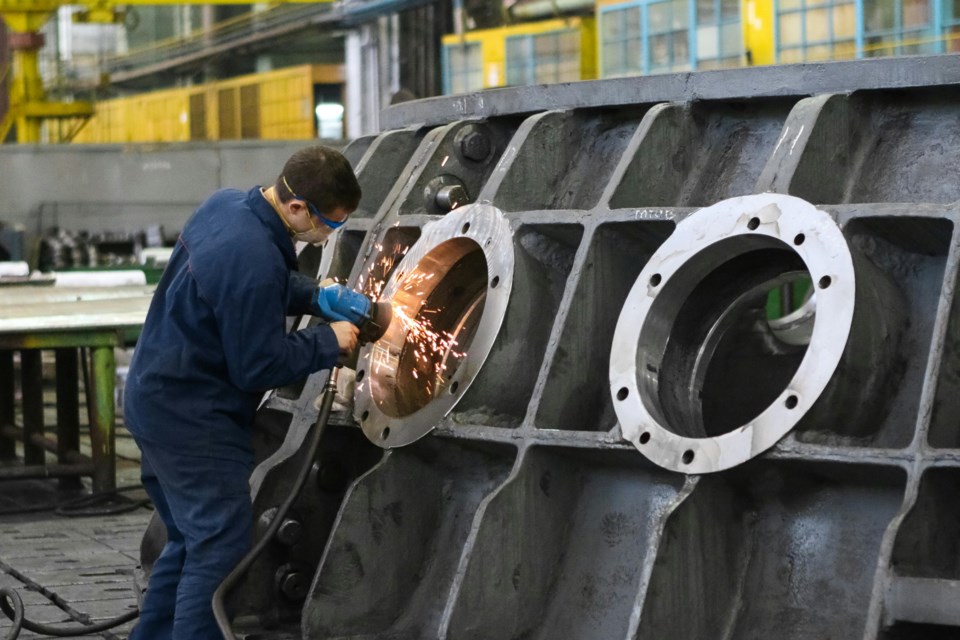Among his various and sometimes conflicting economic objectives, Donald Trump has identified revitalizing manufacturing as a priority. He has railed against the decline in factory jobs — a complaint that overlooks the jump in U.S. manufacturing employment since 2015 but does reflect the fact that manufacturing today accounts for a significantly smaller share of U.S. jobs than it did 30 years ago.
Canadian policymakers have also been paying more attention to manufacturing, particularly since the 2020-21 COVID shock highlighted the country’s vulnerability to supply chain disruptions. Unfortunately, Ottawa’s preferred game-plan has been to dole out vast taxpayer-funded subsidies to politically favoured segments: Electric vehicles, batteries and clean-tech products. This strategy is doomed to disappoint if the goal is to boost Canadian manufacturing broadly, and comes at a high cost to the already-stretched Canadian treasury.
As in the U.S., manufacturing’s place in the Canadian economy has diminished over time. Here in B.C., the sector directly supports 178,000 jobs, representing just six per cent of overall employment, albeit close to one in 10 jobs in the private sector. As a share of all-industry GDP, Statistics Canada estimates that manufacturing makes up approximately six per cent.
While these figures suggest a sector of middling size, manufacturing punches above its weight in economic terms. It supplies more than half of B.C.’s international exports, partly explained by the substantial export contributions of sub-sectors like lumber manufacturing, pulp and paper, primary metal manufacturing, metal fabrication and food processing. However, B.C. is also home to a diverse mix of machinery and equipment manufacturers and transportation equipment manufacturers, most of which are strongly focused on export markets. Collectively, B.C. machinery and equipment manufacturers were responsible for 16 per cent of the province’s merchandise exports in 2023, a proportion that rose to almost 20 per cent last year.
B.C. manufacturers are also vital customers for what economists describe as “intermediate inputs” purchased from other local businesses — including raw materials and energy goods, engineering expertise, financial, legal and accounting services, and transportation and warehousing services. This upstream supply chain demand from B.C. manufacturers augments the sector’s domestic economic footprint. Finally, because it is the part of our economy that’s most exposed to global competition, manufacturing often drives innovation, adding value to products, implementing leading-edge technologies and reducing the environmental impact of industrial activity.
Unfortunately, the competitive — or “hosting conditions” — for manufacturing in B.C. have deteriorated, accelerating the sector’s decline. As documented in an October 2024 report by the Canadian Manufacturers and Exporters (CME), investment per worker in the B.C. manufacturing sector sits at just one-third of the comparable U.S. level, with the gap widening dramatically since the early 2000s. The CME correctly notes that the “low capital intensity” of manufacturing in B.C. poses a major challenge to the province’s “future productivity growth and economic prosperity.”
Manufacturing in B.C. is grappling with several obstacles to growth, if not survival. One is the rising cost of doing business — encompassing high taxes and fees, and a steadily mounting burden of regulation. The high cost and limited availability of industrial land in the Lower Mainland is another key growth barrier, as is a drop in demand stemming from the winding down of large energy and infrastructure projects, with nothing comparable in the queue. Stronger domestic demand for the output of B.C. manufacturers could help to mitigate the blow being delivered by rising U.S. protectionism and a less-favourable global trade environment. This is another reason why policymakers are right to prioritize the advancement of more large-scale capital projects.
Industry leaders also point to skill shortfalls as an ongoing challenge. Governments can help by re-tooling immigrant selection criteria to put more emphasis on technical and trades skills, and redirecting resources within the post-secondary system to expand capacity in manufacturing-related occupations, while spending less in program areas that are less successful in producing job-ready graduates.
Jock Finlayson is chief economist at the ICBA. Ken Peacock lives in White Rock and writes the BC Macro Brief (@kenpeacock on Substack).




